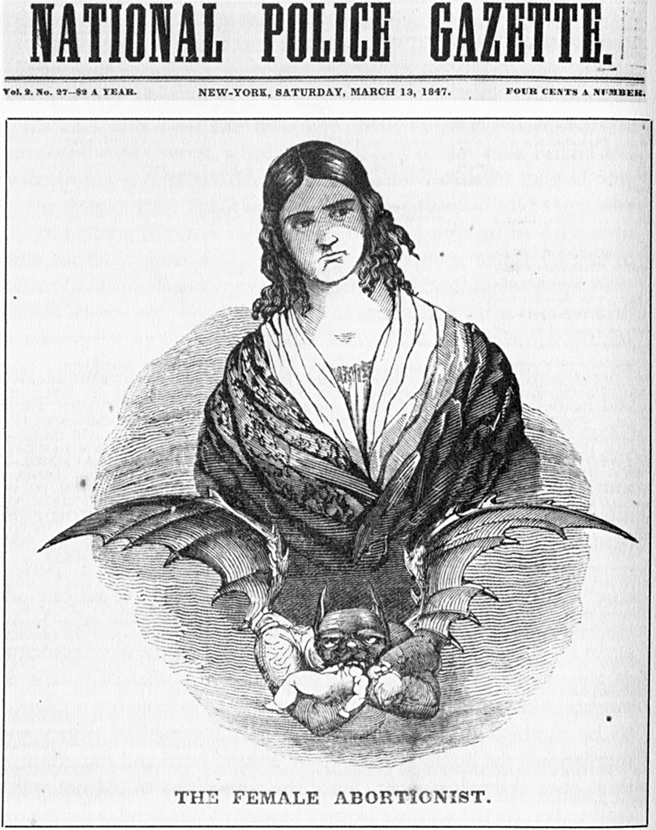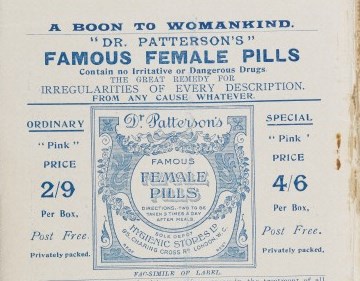Abortion means termination of pregnancy by the removal or expulsion of a foetus or embryo from the uterus, resulting in or caused by its death. The practice of abortion can be traced back to several years and is therefore not a new concept. However, these abortions were known to have been carried out using such techniques which would cause harm or may result in the death of the woman undergoing an abortion.

Illegal abortion
During the Victorian era, abortions were treated as an illegal activity but were rampant. Abortions were regarded as a form of birth control measures by working women. However, the usage of birth control was not permitted in the Victorian society.
Abortions were declared to be illegal for the first time in 1803 and thereafter, stringent laws were brought in force to curb this malpractice. Punishments were awarded to those who were found guilty of indulging in activities like abortion. The punishments normally were harsh like serving several years in prison.
The impact of the Abortion laws has been more or less of an unsteady nature. During the 19th century, doctors, clerics and social activists in England were in support of a complete prohibition of abortions. Abortion Laws like Offences Against the Person Act of 1861 was passed by the British Parliament. This act put a ban on abortions and was so effective in its implementation that other countries adopted similar laws.
As a part of Common law system, abortions were considered to be illegal in the Victorian England anytime after the movements of the fetus can be felt for the very first time by its mother. However, despite the enforcement of abortion laws, abortions were very common in Victorian England.
Abortion Methods
The nineteenth century saw women looking for less gruesome ways as well, with a growing sale of herbal pessaries or patented female ‘pills’ and ‘assistance’ offered by some, not all, midwives and doctors.

Credit: Wellcome Library, London.
Contraception
Contraception methods used were new with lesser risks. End of the century saw use of Diachylon which is a lead-based compound. The discovery was in the 1890s outbreak of lead poisoning in Sheffield. It was observed that the contaminated water supply had caused many pregnant women to abort. While some of the women ended up dying themselves, the substance’s use for abortions soon spread through northern cities.
Documents about abortions in Victorian England
Various court trials, the press, and parliamentary debates have documented the abortion issues. It was not just the methods employed, but also the women and practitioners who employed them.
I 1848, Thomas Radford made his disdain for abortion practice known by calling these “diabolical acts”. However, doctors were allowed to provide ‘therapeutic abortions’ for the protection of women’s health.
19th-century abortion legal timeline
1803 – abortion becomes a statutory offense rather than a common law crime. Capital punishment was not used for the guilty though
1828, 1837 and 1861 Acts – abortion comes in the further control of the law.
1861 – Offences Against the Persons Act. Becomes a crime for the woman to abort herself – previously, acts only had provision to penalise that abortionist.
Views of commentators
It must be noted that some did view abortion as the last “basic means of family planning”, in an era where very few medically safe contraception options were available to the poor.
There is no data and stats available about own abortions, it’s clear that the practice may have been more widespread than we might have thought. For example, there is a speculation that quite a few pregnancies recorded as miscarriage must be a result of an abortive attempt by the woman.
We should be mindful of the fact that there must have been painful stories and suffering by the women who were desperate or even died, from trying to abort an unborn child. With no reliable contraceptive option or safe abortion methods for so many women, abortions was a horrific side of the Victorian history.